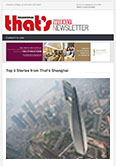The border between Shenzhen and the Hong Kong Special Administrative Region (SAR) is steeped in symbolism from China’s Reform and Opening Up era.
If you’ve studied anything to do with modern China, you’ll have no doubt heard something like: “from a small fishing village to an urban metropolis,” to describe Shenzhen.
This symbolism is borne out at Luohu Port – Shenzhen’s busiest land border crossing point with Hong Kong before the COVID-19 pandemic.
Walk along Renmin South Road on the east side of the main immigration hall, gaze across the barbed wire fence, and you’ll see the rolling green hills of Hong Kong’s New Territories. Look closely enough and you’ll even spot a small and unkempt graveyard on the nearest hillside.

The Hong Kong New Territories visible from the Shenzhen side of the border on Renmin South Road
There was a time when the Shenzhen side of the border looked like this – green, rural and full of those fishing villages we hear so much about.
That time has long gone.
The creation of Shenzhen as a Special Economic Zone catalyzed the city’s development on an unprecedented scale, as many sought opportunities from the growing economic powerhouse of the Guangdong-Hong Kong-Macao Greater Bay Area.
Prior to COVID-19, Luohu Port very much felt like it was at the forefront of this growth. The area is a transportation hub – encompassing Shenzhen Railway Station and Luohu Coach Station – as well as a land border crossing with Hong Kong.
According to the Office of Port of Entry and Exit of Shenzhen Municipal People’s Government, Luohu Port is Shenzhen’s largest capacity port, which used to rank third in the whole of China in terms of the number of border crossings.

Towards the border crossing point between Shenzhen and Hong Kong
The 18,000 square-meter immigration hall was constructed in January 1984 and opened in 1986. Until recently, the port had around 400,000 people crossing daily between Shenzhen and Hong Kong. Some estimates even put that number as high as 600,000 during public holidays.
The port links Luohu station on Shenzhen Metro Line 1, with its namesake of Lo Wu station on the Hong Kong side.
Following the outbreak of COVID-19 and subsequent travel restrictions between Hong Kong and the Chinese mainland, there’s been one vital ingredient missing at Luohu Port.
The immigration hall is closed – meaning the number of those crossing the border has gone from around 400,000 per day to zero.
The effects of the closure are immediately evident during our visit to Luohu Port in late August 2022.
Shenzhen Railway Station and Luohu Coach Station are still abuzz with passengers coming and going. But head further towards the immigration hall and the crowds thin out.
It’s not only the border crossing point that feels somewhat deserted. As we climb the steps above the Coach Station, we see Luohu Commercial City on the left.

The Luohu Commercial City
A middle-aged Chinese man with a smile on his face approaches us and walks by our side.
“Hello. Shopping?” he says in English with a noticeable Guangdong accent.
He then proceeds to name over and over some of the items he sells, invariably designer bags, watches, shoes, jewelry, etc.
The man is from Shantou city in the easternmost corner of Guangdong province. Along with his family members, he runs several small stores located inside Luohu Commercial City.
As he walks us inside, he explains in a mixture of English and Mandarin the effects COVID-19 has had on his business – a business that has always relied on vast numbers of people crossing the border.
We walk through the entrance to Luohu Commercial City where a lone employee sits at a desk and checks our health codes. We are about to be introduced to Luohu Port’s new ghost town.
A ‘Shopping Heaven’ of Days Gone By
There was probably a time when Luohu Commercial City felt like the future.
Having opened in 1994, the 7-floor indoor market contains around 1,280 shops. According to the Baike page on the Commercial City, the occupancy rate was around 99% prior to the COVID-19 pandemic.
The Commercial City has often been referred to as “Hong Kong People’s Shopping Heaven” – attracting swathes of Hong Kong residents across the border, in many cases for a one-day shopping trip.
Hong Kong resident Jamie Chau is currently studying for a PhD at the University of Sydney in Australia; he’s researching how intellectuals rethought Hong Kong’s relationship with the Chinese mainland and colonial reality in the mid-20th century.
He tells That’s about his memories of traveling to Luohu during his childhood and during his time as a university student.
“Luohu became a place where my classmates and I would go to buy books because they were much cheaper than in Hong Kong,” Chau says.
“Many Hong Kong people would go there for dental services, massages, etc.
“When I started university in the early 2010s, Luohu was a place we would often travel to. It was a convenient meeting point for many affordable organized tours of the Chinese mainland. Meanwhile, youngsters would go there for shopping or just to spend the weekend.”
Chau acknowledges the unprecedented effects of the COVID-19 pandemic on Luohu, especially on the Luohu Commercial City.
However, he also suggests that there has been a longer-term trend for Hong Kongers of his generation to favor border-crossing points located in more modern and trendier areas of Shenzhen – including Futian Port in Futian district and Shenzhen Bay Port in Nanshan district.
“Now, we find Luohu quite old fashioned. Qianhaiwan (located near Shenzhen Bay Port in Nanshan district) and Futian are more modern.”
Whether authorities agree with Chau that Luohu is old-fashioned is unclear. However, when it comes to Luohu Commercial City, they agree that the indoor market needs reform.
An article entitled ‘Goodbye to The Notorious Market’ was published by SINA News in January 2022.
In this case, the “notoriety” stemmed from the market’s reputation for counterfeit goods.
The Office of the National Leading Group on the Fight Against IPR Infringement and Counterfeiting announced they had made progress in tackling the problem, as Luohu Commercial City was removed from one of the Office’s blacklists.
A significant change, other than the lack of border crossers, perhaps.
The (Almost) Abandoned City
Our new friend from Shantou, who spoke to That’s using the pseudonym Alec, leads us inside Luohu Commercial City.

On the first floor inside Luohu Commercial City
In the central area of the market on the first floor, barely any customers can be seen. Instead, all we hear are the shouts and screams of young children – presumably those of parents running businesses in the market – chasing each other up and down the stairs, as well as going up and down in the elevator – one giant indoor play area.
Alec takes us to one of his stores on the second floor, where we’re greeted by his heavily-pregnant sister-in-law.
The shelves are stacked with designer bags (some of which look like they’re made from reused raincoats), watches, ornate-looking ball-point pens and much more.
Alec’s sister-in-law reiterates to us the woes of doing business during the pandemic. Out of pity, we agree to make a few purchases.

Pens purchased at Alec's store
We test some of the ball-point pens, scrawling some simplified Chinese characters onto a piece of paper.
“One pen for RMB100,” she tells me.
We buy four, and get one for free.

A bag purchased at Alec's store
We then agree to buy one of the bags which looks like it once kept someone dry during Guangdong’s rainy season.
And, finally, another female family member comes in from a store across the hall and measures us up for a belt.
The sister-in-law punches a few numbers into a calculator. “Total of RMB920. Just give me RMB900.”
After we walk away with our bag of goods, the same family member who measured us up for the belt invites us to look at jewelry, watches and shoes. We politely decline, saving our WeChat wallets from another beating.
We bid farewell to Alec and his family members and take a stroll around other parts of the market.
Many stores still have items stocked on the shelves, despite closure – perhaps because the owners one day hope to return and do business. We walk past stores stocked with tea, teapots, jade statues, everyday items and a few abandoned eateries that have seen better days.
Outside of the entrance to the building, an English-language sign reads ‘Welcome To Luohu Commercial City.’ Below it is another sign in Chinese that says, ‘Create a model civilized city. Build a modern and civilized city’ – an attempt, perhaps, to help the Commercial City shed its “notorious” reputation.
We stay in touch with Alec over the next few days, asking him where he sources his products from, and what it was like doing business in Luohu Commercial City prior to the COVID-19 pandemic.
“It’s a little awkward for me to answer these questions,” he replies. We can only speculate as to why, but he did tell us that he believes that around 90% of stores in Luohu Commercial City have closed.
Alec has stuck with it out of necessity as it is his only form of income.
As we exit Luohu Commercial City and make our way towards the metro station, the Shenzhen summer sun beats down hard. The backdrop of the clear blue sky and the green Hong Kong hills, combined with the immigration hall in the foreground, makes for a pleasant last look at Luohu Port.
Just before we enter the metro, like a scene from Ground Hog Day, another man approaches. “Hello, shopping?” he asks.
We tell him we are leaving but agree to take his business card. On it, store owner Awen has printed pictures of designer bags and watches, as well as Luis Vuitton, Hermes, Gucci, Chanel and Dior logos.

Business card of Luohu Commercial City store owner Awen
It reads in poorly punctuated English:
“Best Quality:handbag,watches,wallet,belts,argent,pen,neckties and so excellent [sic].”
Awen smiles and says to me in Chinese, “Come next time.”
Will there be a “next time”? we wonder. And, if there is, what will have become of Luohu Commercial City?
Will a re-opening of the border crossing reignite the “shopping heaven” of the past? Or will shoppers have moved on to trendier areas of Shenzhen like Futian and Qianhaiwan?
[All images via That's/Alistair Baker-Brian]






















0 User Comments